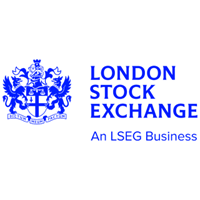-
BackWhat we doNumis is an ambitious, dynamic and innovative investment bank, driven to excel across all aspects of its delivery.Investment Banking
-
BackLatest newsRead the latest news about our business, our people and our work, find out about our next events and conferences.News
-
BackWho we areOur collaborative environment and distinctive way of excelling , is nothing without our great people.
-
BackOur board
Investment Recommendations used in Research
Distribution of research investment recommendations in respect of Research in the last Quarter (other than Investment Companies)
01/04/2023 - 30/06/2023
| All Securities | Firms provided with material banking services | |
| Buy | 62.8% | 93.1% |
| Add | 18.2% | 4.4% |
| Hold | 15.8% | 2.5% |
| Reduce | 2.8% | 0.0% |
| Sell | 0.5% | 0.0% |
| Total | 100% | 100% |
Distribution of research investment recommendations in respect of Research in the last 12 months (other than Investment Companies)
01/07/2022 - 30/06/2023
| All Securities | Firms provided with material banking services | |
| Buy | 64.4% | 91.1% |
| Add | 13.4% | 4.0% |
| Hold | 16.7% | 4.8% |
| Reduce | 3.6% | 0.0% |
| Sell | 2.0% | 0.0% |
| Total | 100% | 100% |
The framework for investment recommendations used in Research, other than Investment Company Research, as from 31 August 2022, is as follows:
| Upside of 20% + | Buy |
| Upside of 10 - 19.99% | Add |
| Upside of 0 - 9.99% | Hold |
| Downside of 0 - 9.99% | Reduce |
| Downside of 10% + | Sell |
A target price is set on a market neutral basis, with a 12 month horizon from the time of publication.
In certain publication types (namely response and periodic pieces), where the primary content is not focussed on a recommendation, consistency of recommendation and target price is not required.
Investment Company Research Investment Recommendations
For Investment Companies the aim is to identify funds where the share price will outperform the benchmark on a risk adjusted total return basis. This may be through either a narrowing of the discount or outperformance of the underlying portfolio. Funds are categorised as either Core Investment Recommendations or Trading Opportunities and are assigned a rating of Buy or Sell.
Through the Core Investment Recommendations we seek to identify buying opportunities for investors in each asset class. Our time frame for Core Investment Recommendations is 12-18 months. Core Investment Recommendations will take into account valuation, but will place a greater emphasis on the quality of management, performance record and risk characteristics (including portfolio diversification, gearing and any outstanding commitments).
Trading Opportunities are typically based on a shorter time frame of 3-6 months and our views regarding these may change in a relatively short space of time depending on movements in the premium/discount. These may include Buys and Sells, as well as switching opportunities between funds with similar investment mandates. When identifying Trading Opportunities, we tend to place a significant emphasis on valuation, typically by assessing the upside and downside to the discount/premium to net asset value based on a combination of historic trading ranges and peer group averages. Where appropriate we will also take account of discount control mechanisms (e.g. share buyback policies) or potential corporate action (e.g. forthcoming continuation votes). Generally a Buy/Sell rating will be categorised by expected out/under performance of at least 5% on an absolute or relative basis.
When making investment recommendations we take account of trading liquidity and, all things being equal, favour the larger and more liquid funds within an asset class. When any changes are made to the investment recommendations we will seek to explain the specific reasons for including/excluding each fund.
For investment companies with Equity mandates we typically focus on the outlook for relative, rather than absolute share price performance. For instance, we may recommend a fund investing in Japan because we believe it will outperform the TSE 1st Section, but this does not necessarily mean that we favour the Japanese market. For some funds there may be no appropriate benchmark or the target may be to achieve absolute returns (e.g. Hedge Funds). We may still recommend such funds as long as we believe they can add value on a risk adjusted basis allowing for the nature of their structure (e.g. gearing) and the volatility of their asset class.




